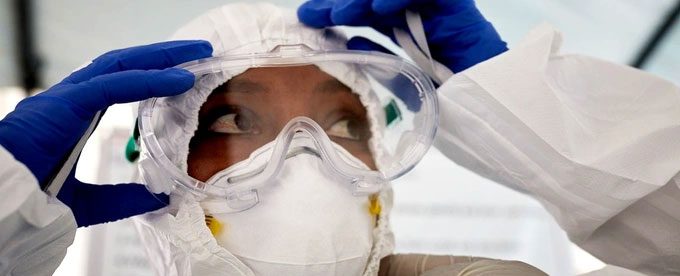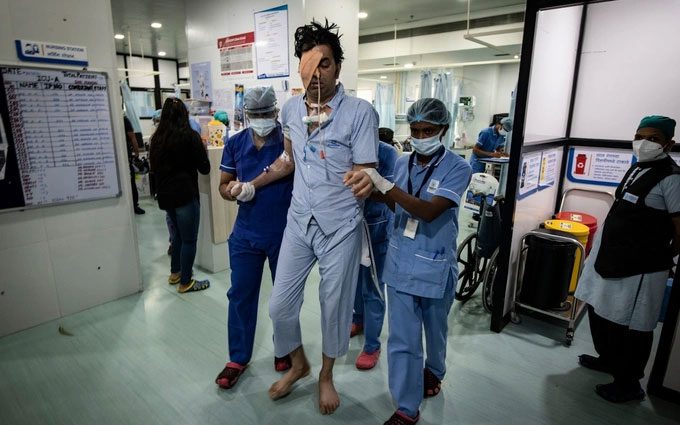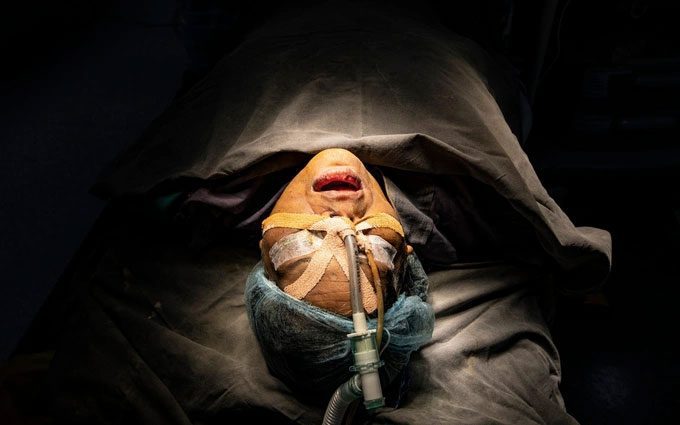The World Health Organization (WHO) has announced that it is compiling a new list of pathogens that pose a risk of causing pandemics and require close monitoring.
The purpose of this initiative is to update the list to guide global investment and research development, particularly in the fields of vaccine research, testing, and disease treatment.
WHO has convened over 300 scientists to review profiles of more than 25 families of viruses and bacteria. The organization will also consider “Disease X”, a disease that is not fully understood and could lead to a severe pandemic worldwide.
What is Disease X?

A healthcare worker training at a quarantine center in Bole Chefe, Ethiopia on February 12, 2020. (Photo: WHO/Otto Bakano).
Disease X is caused by a type of fungus considered a deadly pathogen by health experts. It often manifests as a secondary infection following severe viral infections.
The case of Vikram Trivedi is a typical example. When this 38-year-old lawyer contracted the coronavirus, he was not overly concerned. However, shortly thereafter, in a desperate attempt, doctors had to remove his left eyeball, a large portion of his sinus, and part of his mouth to save his life.

Patient Vikram Trivedi had to undergo the removal of his left eyeball and throat. (Photo: Simon Townsley).
The surgery was not due to Covid-19 or an infection but rather due to an aggressive type of “black fungus” that invaded Trivedi’s body, compromising his immune system. The doctors had no choice but to remove the parts of Trivedi’s body that the fungus had infiltrated.
Trivedi is still one of the lucky ones. In India, his home country, approximately 4,300 Covid-19 patients died from this type of fungus during the second wave of the pandemic in 2021. WHO has stated that fungal diseases are attacking humans at an alarming rate.
Driven by Covid-19, the rise of drug resistance and immunocompromised patients has exacerbated the situation, leading to increased morbidity and mortality.
The list of the most dangerous pathogens published by WHO includes Disease X along with 19 other types of fungi considered the most hazardous.
The Global Action Fund for Fungal Infections estimates that over 300 million people worldwide suffer from dangerous fungal diseases each year, with 25 million at high risk of death or loss of vision.
Not Limited to Any Geographic Area

More than 300 million people suffer from dangerous fungal infections each year. (Photo: Simon Townsley).
The risk of infection is not confined to any geographic area. More and more people around the world are being affected by this disease.
Typically, fungi kill by invading the respiratory tract and attacking the nervous system, including the brain. Those with weakened immune systems are the most susceptible to fungal invasion. “Fungal diseases are becoming increasingly common and particularly affect vulnerable, immunocompromised patients,” said Professor Haileyesus Getahun, Director of Global Coordination on Antimicrobial Resistance at WHO.
Michael Ryan, Director of WHO’s Health Emergencies Program, stated that identifying specific pathogens and viruses for research and development of countermeasures is crucial for effective and rapid epidemic prevention and control.
“If we had not previously invested significantly in research and development before the Covid-19 pandemic, we would not have been able to produce a safe and effective vaccine in such a record short time.”
WHO first published its list of the most dangerous pathogens in 2017. Currently, this list includes Covid-19, Ebola, Marburg, Lassa fever, MERS, SARS, Nipah, Zika, and Disease X.

A patient recovering after surgery due to a fungal infection. (Photo: Simon Townsley).
For each pathogen identified as a priority for research, experts will identify gaps in human understanding of these diseases, along with research priorities to uncover what we still do not know and how to address it, such as developing vaccines, finding treatment methods, and diagnostic tests.
In addition to facilitating clinical trials to develop tools for epidemic response, the international community will also enhance monitoring of compliance with regulations and ethics in the epidemic response process.
WHO is expected to release the updated list before April 2023.


















































